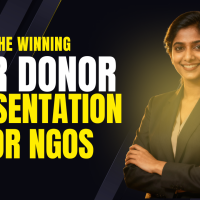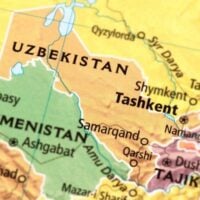Deadline: 8-Sep-20
The Administration for Community Living (ACL) along with the Office of the Assistant Secretary for Health (OASH) are pleased to announce the Mobilizing and Empowering the Nation and Technology to Address Loneliness & social isolation (MENTAL) Health Innovation Challenge to address this need. Supporting partners include the VA, FCC, and the CTA Foundation.
The MENTAL Health Innovation Challenge asks care partners, local communities, businesses, non-profit organizations, institutions, healthcare providers, technologists, academics, among others in the global community for innovative solutions to combat loneliness and social isolation in vulnerable populations including Veterans, older adults, persons with disabilities living alone, racial and ethnic minority populations, as well as those who live in care facilities and group homes that may be isolated from visitors and family members during a quarantine.
The goal of this challenge is to increase consumer awareness and use of technology tools that keep older adults, people with disabilities, racial and minority populations, and Veterans socially engaged and connected to families, friends, communities and activities of interest. The Challenge is seeking solutions that assess socially isolated individuals and match them with appropriate technology tools and social engagement programming that best meet their needs. The winning solution will become part of a public-private campaign to reach up to 10 million socially isolated older adults, people with disabilities, racial and minority populations and Veterans. Successful solutions will build from existing assessments, technology tools, and utilize state of the art matching algorithms to address the following topic area:
Topic Area: Increase Awareness and Use of Technology and Social Engagement Programming Through an Accessible Social Engagement Clearinghouse
- Create an accessible technology and social engagement clearinghouse that catalogs and links the array of technology, apps and social engagement programming resources.
- Allow consumers to be matched to appropriate technology tools and programs based on their identified needs, interests, and abilities. This will require the design of a consumer interface and a user friendly assessment process that can inform the development of algorithms to match individuals to technology tools and social engagement programming that would best meet their needs and interests.
- Design a user centered process to enable a seamless end to end experience for an individual in identifying, acquiring/accessing and using appropriate solutions to address their social isolation. This would include making informed decisions on options, enrolling into selected programs, acquiring technology, and securing training necessary to use selected solutions. The Social Engagement Clearinghouse will be interoperable, enable real-time indicators on program, technology and service availability, and enable assessment and screening information to be pushed by the consumer to their provider(s) of choice or whoever is supporting their care needs.
- Propose a mechanism to include and update user reviews and other information about usability, quality, accessibility and availability of social engagement programming and technology tools that informs individual decisions about which products to select.
- Pilot the use of the assessment and clearinghouse in a variety of settings including Aging and Disability Resource Centers.
- The user interface of prototypes should be designed with a feedback loop to continue to assess quality and accessibility of experience during the pilot.
- Evaluation of the pilot should also include the performance of the matching algorithms, the ability of the individual to enroll in selected social engagement programs and acquire the selected technology, and the impact the selected social engagement programs and technology tools have had on increasing the individual’s level of social engagement (i.e. reducing social isolation).
- A prize purse of $750,000 is available for this prize challenge. The Phase 1 Prize Challenge fund is $150,000. For this challenge they will award up to $150,000 total prize funds for Phase I. They expect to select up to 3 Finalists to progress on to Phase II. Each Finalist will win $50,000 upon selection. Please note – In the event they choose fewer than 3 Finalists, the $150,000 will be split evenly among those teams selected (for example, if 2 teams are selected as Finalists each will receive $75,000).
- The Phase 2 Prize Challenge award amount is $550,000. The winner will be awarded $450,000 and the runner-up will be awarded $100,000. Finalists and the winner are eligible for a bonus prize if they submit a written assessment detailing their continued work to implement, scale and sustain the solution. Total funds available for the bonus prize is $50,000. The bonus prize submissions will be due September 30, 2021 and details will be provided at a later date.
Eligibility Criteria
- Shall have registered to participate in the competition under the rules promulgated by the Administration for Community Living;
- Shall have complied with all the requirements under this section;
- In the case of a private entity, shall be incorporated in and maintain a primary place of business in the United States, and in the case of an individual, whether participating singly or in a group, shall be a citizen or permanent resident of the United States;
- May not be a Federal entity or Federal employee acting within the scope of their employment (all non-HHS, non-FCC or non-VA federal employees must consult with their agency Ethics Official to determine whether the federal ethics rules will limit or prohibit the acceptance of a COMPETES Act prize);
- Shall not be an HHS, FCC, or VA employee;
- Federal grantees may not use Federal funds to develop submissions unless consistent with the purpose of their grant award; and
- Federal contractors may not use Federal funds from a contract to develop COMPETES Act challenge submissions or to fund efforts in support of a COMPETES Act challenge submission.
- The top 2 contenders of Phase 2 must agree to use a portion of their prize award to travel to the CES 2021 in Las Vegas, NV.
- Entrants must also agree to indemnify the Federal government against third-party claims for damages arising from or related to competition activities.
- The Federal government will not select as a winner an individual or entity that is on the Excluded Parties List.
Judging Criteria
Applicants will be judged on the following criteria for each phase of the competition.
- Innovation and Value to Stakeholders
- Degree to which the proposed solution bridges the gap in consumer awareness and available social engagement products and programs in the market and across organizations.
- Degree to which the proposed solution creates a simplified consumer experience that matches individual needs with social engagement products, programs and training that are appropriate for their level of functioning, interests, English proficiency, preferred primary language, literacy level and preferences.
- Product Functionality and Usability
- Degree to which the proposed solution is informed by user needs which may include Veterans enrolled in the Veteran Directed Care program.
- Degree to which the proposed solution includes an accessible, computer assisted assessment and screening process that identifies individual needs, interests, English proficiency, preferred primary language, literacy level and preferences.
- Degree to which the clearinghouse includes relevant technologies and social engagement products, programs and training.
- Degree to which the proposed solution enables real-time query and response with an electronic clearinghouse.
- Degree to which the proposed solution includes a process to add new technologies and social engagement programming and maintain up to date information on existing listings.
- Degree to which the proposed solution includes the availability of training videos for consumers to learn how to use the technology and/or ability to request a demonstration of technology options.
- Degree to which the proposed solution includes an ability to acquire technology and/or enroll in social engagement programming.
- Degree to which the clearinghouse and user interface meets accessibility requirements.
- Partnerships & Collaboration
- Degree to which the applicant proposes a team of key stakeholders with relevant technical expertise as well as knowledge in technologies and programs that address social isolation.
- Degree to which the applicant proposes a governance model that ensures appropriate oversight, transparency, and maintenance of the user interface and clearinghouse.
- Degree to which the proposed plan for testing the prototype includes a state No Wrong Door System and ADRCs.
- Degree to which partnership and collaboration occurred with the state’s No Wrong Door System.
- Technical Feasibility
- Degree to which the proposed solution design and/or architecture leverages existing technology and social engagement programming databases, including no tech, low tech and high tech solutions to increase social engagement.
- Degree to which the proposed solution embeds technology training videos and streamlines enrollment in social engagement programming and acquisition of technology.
- Degree to which the proposed solution includes robust matching methodologies with plans to modify them based on experience overtime.
- Degree to which the proposed solution uses open Application Programming Interfaces (APIs) for related consumer facing apps and standards for social isolation consistent with the Interoperability Standards Advisory.
- Degree to which the proposed solution is interoperable to enable consumers to push assessment data, screening information and the provision of technology and enrollment in social engagement programming solutions to the provider(s) of choice’s electronic health record, family member and/or whoever is supporting the consumers’ care.
- Impact
- Key evaluation factors shall include: superior matching capability which improves upon prior efforts, ease of use, and security and verification capabilities which improve upon prior efforts.
- Technical Feasibility / Viability
- Integration of other efforts, data, and platforms. Key evaluation factors shall include the extent to which the prototype has short- and long-term feasibility and sustainability, security and verification, matching accuracy, interfaces with social engagement programming and technology data sources.
- Design Quality, Usability and Functionality
- Completeness, clarity of workflows, and quality; results of user testing. Key evaluation factors shall include the ability of the solution to match end users to social engagement programming and technologies that meet their needs and interests. The usability of the proposed solution by end users. The ability of the proposed solution to enable the end user to enroll in social engagement programming and/or acquire technologies to address social isolation. The ability of the user to push data to family members and providers of choice. The ability of the prototype to capture and display user reviews of social engagement programming, technologies and apps.
- Deployment Approach and Refinement
- Key evaluation factors shall include: the proposed plan to refine the prototype based on results from user testing and the plan for the clearinghouse to evolve over time informed by experience of users including a Veteran receiving service through the Veteran Directed Care program and the extent to which the prototype has short- and long-term feasibility and sustainability.
- Degree to which the state NWD Systems and ADRCs are utilized as part of the deployment strategy.
For more information, visit https://www.challenge.gov/challenge/MENTAL-health-social-isolation-challenge/









































